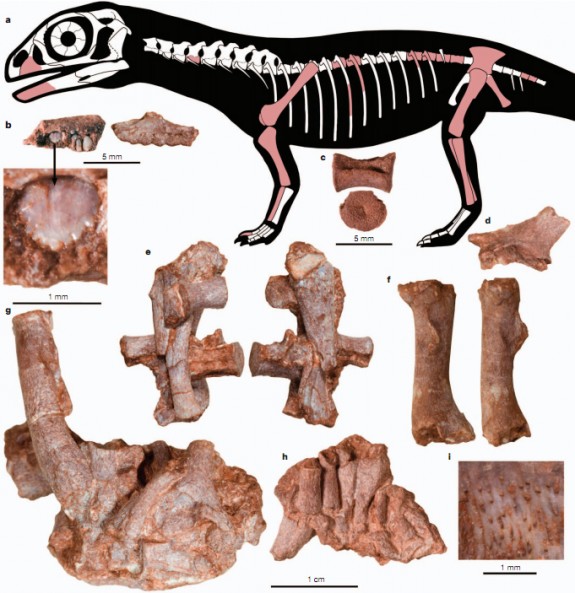Scientists Just Found the Teeny Bones of Fossilized, Embryonic Dinosaurs
From southwestern China, baby dinosaur bones and preserved eggs
![]()

Some of the fossilized baby dinosaur bones and where they could have fit in the ancient dinosaur Massospondylus. They think that the new find actually represents a different-but-similar dinosaur, Lufengosaurus. Photo: Reisz et al.
A paleontological treasure trove unearthed in southern China has yielded a dazzling find: a field of fossilized eggs and embryonic dinosaurs of what is thought to be Lufengosaurus, a long-lost sauropod-style dinosaur. This “bone bed,” say the scientists in a recently published study, is tied with another field from South Africa for the distinction of being the world’s oldest collection of fossilized dinosaur eggs. What’s more, says Nature, research on the eggs and embryos turned up something spectacular:
t is not just the age of the fossils that is notable, the researchers say. Spectroscopic analysis of bone-tissue samples from the Chinese nesting site revealed the oldest organic material ever seen in a terrestrial vertebrate.
The team found more than two hundred bones. They also found collagen—“a common protein found in connective tissues such as bones and tendons”—trapped within many of those bones, says the CBC.
“If this is collagen, then the potential for extracting collagen and comparing to those of living animals really opens a new area of research,” Reisz said.
In the Chinese baby bone bed, the researchers found that the fossilized baby dinosaur bones were scattered about, rather than preserved whole with the baby dinosaurs still encased in their eggs. The bones represented dinosaurs at different stages of development, which gives the researchers clues about how, exactly, the baby dinos grew.
The scientists are sure that these baby dinosaurs were still embryos developing in eggs (and not just little hatchlings), because these embryos were not as far along as fossilized baby dinosaurs found still trapped within their eggs at other research sites. Other signs made it obvious that the babies were still growing, too: they had teeth that that didn’t yet protrude from the bone, and their bones were not yet fully developed.
More from Smithsonian.com:
Eggs and Enigmatic Dinosaurs
Exceptional Eggs Preserve Tiny Dinosaurs
Baby Dinosaur Mystery
/https://tf-cmsv2-smithsonianmag-media.s3.amazonaws.com/accounts/headshot/smartnews-colin-schultz-240.jpg)
/https://tf-cmsv2-smithsonianmag-media.s3.amazonaws.com/accounts/headshot/smartnews-colin-schultz-240.jpg)